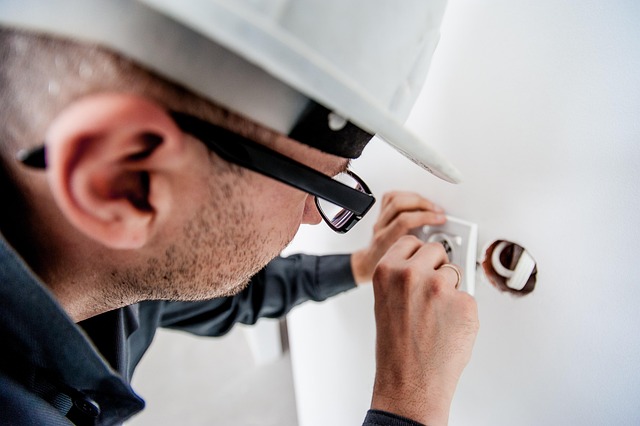Modern circuit breakers offer superior safety and control compared to old fuses, with immediate interruption of current flow upon detection of excess electricity. When replacing fuses, electricians must select appropriate circuit breakers based on amperage ratings for customized power distribution. Upgrading to circuit breakers enhances safety, prevents electrical failures, and simplifies maintenance, making it a task best left to professionals.
Looking to upgrade your home’s electrical safety? It’s time to replace old fuses with modern circuit breakers. This comprehensive guide delves into understanding the advanced functionality of contemporary circuit breakers, offering a straightforward step-by-step replacement process for electricians and DIY enthusiasts alike. Discover the numerous benefits this switch brings, enhancing your property’s security and peace of mind.
- Understanding Modern Circuit Breakers
- Replacing Fuses: A Step-by-Step Guide
- Benefits of Upgrading to Circuit Breakers
Understanding Modern Circuit Breakers

Modern circuit breakers are a significant upgrade from traditional fuses, offering enhanced safety and convenience for both homeowners and electricians alike. Unlike fuses, which protect electrical circuits by blowing when overloaded or short-circuited, circuit breakers use magnetic fields to interrupt current flow in case of excess electricity. This immediate response prevents overheating and potential fires.
When an electrician replaces old fuses with modern circuit breakers, they are not just making a simple switch. Circuit breakers come in various types and ratings, allowing for precise control over different circuits within a home or building. This customization ensures that sensitive electronics and lighting fixtures receive the appropriate power levels, while high-demand areas like air conditioning units are protected against sudden spikes. An understanding of these modern components is crucial for any electrician undertaking such an upgrade.
Replacing Fuses: A Step-by-Step Guide

Replacing old fuses with modern circuit breakers is a task an electrician can handle efficiently. Start by locating the fuse box, often found in basements or utility rooms. Next, identify the fuse to be replaced—look for its designated number or label. Turn off the main power supply before proceeding. Remove the old fuse by gently pulling it out of the slot. Inspect the circuit breaker panel for a suitable replacement that matches the fuse’s amperage rating. Insert the new circuit breaker into the designated slot, ensuring it clicks into place to indicate proper engagement. Verify that the circuit is now tripped and cannot be reset until power is restored.
Benefits of Upgrading to Circuit Breakers

Upgrading old fuses with modern circuit breakers offers a multitude of advantages for both homeowners and electricians. One of the key benefits is enhanced safety. Circuit breakers are designed to interrupt electrical flow in case of overload or short-circuit, preventing potential fires and electric shock hazards that outdated fuses might not effectively mitigate. This upgrade significantly reduces the risk of electrical failures and associated dangers.
Additionally, circuit breakers provide better control and convenience. They allow for easy manual reset, making it simpler to manage power supply during maintenance or in case of temporary surges. Circuit breakers also offer a wider range of ratings, enabling homeowners and electricians to tailor protection according to specific needs. This flexibility contrasts with fuses, which are often limited in their capacity and require more intricate replacement processes when damaged or overloaded.
Upgrading from traditional fuses to modern circuit breakers is a smart move for any homeowner or electrician. By adopting this simple yet effective change, you gain enhanced safety features, improved convenience, and better protection for your electrical system. Circuit breakers offer automatic overcurrent protection, immediately cutting off power in the event of a fault, thus preventing potential fires and damage. This article has provided a comprehensive guide to understanding and implementing this upgrade, ensuring a safer and more efficient home or workplace. Remember, a qualified electrician is key to ensuring these changes are done correctly and securely.
